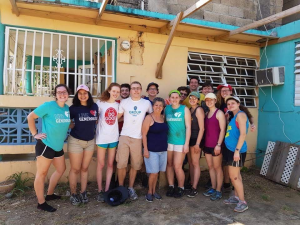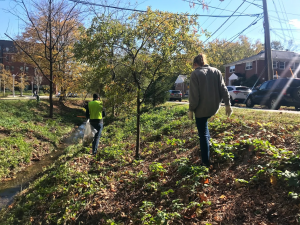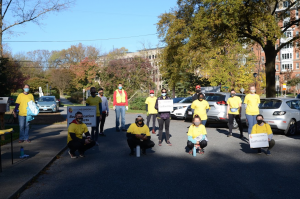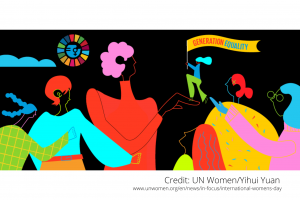Dennis Sepper, Rosemount, MN
Warm-up Question
Have you ever had anything go really wrong but it ended up being just what you needed? What was that like?
Of Fruit and Seeds
At the inauguration of President Joe Biden and Vice President Kamala Harris, the world was introduced to a 22-year-old poet, Amanda Gorman. Her poem, “The Hill We Climb,” delivered with such poise and passion, launched her into the spotlight of fame. Sitting just feet away from her that day was former First Lady Michelle Obama. In the February 18/February 23, 2021 issue of Time magazine, Ms. Obama interviewed Amanda Gorman about that day and about her work. At one point Ms. Obama asked Amanda about the influence art can have on social change. Ms. Gorman answered “Absolutely. Poetry and language are often at the heartbeat of movements of change.” She noted how words and images can convey meaning. She then recalled how at a Black Lives Matter rally she saw a banner that read, “They buried us but they didn’t know we were seeds.” The image that those words conveyed touched Ms. Gorman very deeply.
From small beginnings, when things look at their worst, great things can arise and grow and bear much fruit. In many ways Ms. Gorman was correct. Women won the right to vote after many thought the movement was dead and buried. Same with the abolitionist movement, the civil rights movement, the LGBTQ movement, and many others. Many of those who worked for the above rights never saw the fruits of their labors, but, unknown to them, they were the seeds that bore fruit many years later.
Discussion Questions
Listen to or read Amanda Gorman’s poem, “The Hill We Climb”
- What seeds do you think Amanda Gorman is planting in her poem?
- What fruit do you think Amanda Gorman is hoping her seeds will bring forth?
Fifth Sunday in Lent
(Text links are to Oremus Bible Browser. Oremus Bible Browser is not affiliated with or supported by the Evangelical Lutheran Church in America. You can find the calendar of readings for Year B at Lectionary Readings.)
For lectionary humor and insight, check the weekly comic Agnus Day.
Gospel Reflection
This week’s gospel begins in a curious way. Jesus and the disciples are in Jerusalem anticipating the Passover feast. Some Greeks are also in the city and finding Philip, a follower of Jesus, they ask to see Jesus. However, notice that Jesus never goes to see the Greeks nor does Jesus invite them to come to him. Instead Jesus sees this request from the Greeks as a sign that his hour has come to be crucified and to die (The gospel writer John always sees Jesus’ death as an act of glory. That is why Jesus says, “The hour has come for the Son of Man to be glorified.”)
Then Jesus creates a very interesting image: “Very truly, I tell you, unless a grain of wheat falls into the earth and dies, it remains just a single grain; but if it dies, it bears much fruit.” This image only makes sense when we know that Jesus is in Jerusalem for the last time. Within days he will be arrested, tried, crucified, and will die. Jesus is the grain and the cross is the instrument that places Jesus in the earth.
But we also know what happens three days after that. Jesus rises from the dead and you and I become the fruit of that grain dying and rising. The fruit we bear is the proclamation of the gospel, the announcement of God’s grace and salvation and service to others that Jesus has shown in his service to us. Indeed, Jesus is telling the truth; as we lose our lives in service to others we find it. We see that real power lies in giving it to others, that we are leaders when we become servants to others. This is the fruit we bear because Jesus became that grain of wheat laid in the earth. He rose to become the mighty branch from which we live, and move and have our being.
But there is more. In our baptism we proclaim that we also die with Jesus and rise to newness of life (see the beginning declaration of the Holy Baptism service, Evangelical Lutheran Worship, page 227, and St. Paul’s words in Romans 6:4). In that way, we are also seeds…seeds which bring forth peace, justice, love. Every act of love, mercy and forgiveness, however small, can be a seed of change in the world. We might never see the fruit of the seed we plant, but we trust that God will cause it to grow and bear fruit.
We are both fruits of Jesus’ grain of wheat and seeds in our own right. Good news indeed!
Discussion Questions
- What things do you have a passion for? Sports? Music? Climate change? Rescue animals?
- Where and how were the seeds for that passion planted in you? Was it something you saw on social media? Was it something someone said to you or told you about?
- Seeds and fruit are not just a part of an individual’s life; they are also a part of a community’s life. What kind of fruit does your church community bear? What seeds are your church planting in the neighborhood where it is located? How can you be a part of that fruit bearing and seed planting?
Activity Suggestions
Ask an adult family member how they came to pursue their calling (occupation or hobbies or social concerns). Where were the seeds planted for them in their past to be interested in their calling? What fruit do they hope to bear in the future?
Closing Prayer
Loving Jesus, throughout your life you sought to plant seeds of love and justice in people and in communities. In this Lenten season, send your Holy Spirit upon us that we might bear the fruit of your death and resurrection wherever we are planted, and by your grace, may we plant the seeds of your love in all those we meet today and every day. Amen





 Larry Herrold is the ELCA Hunger Advocacy Fellow with the
Larry Herrold is the ELCA Hunger Advocacy Fellow with the 


 Sandra Roper is a senior at the University of Maryland, originally from Massachusetts. She expects to graduate in May with degrees in English Literature and Germanic Studies. She has been an active member in the Humble Walk, UMD’s Lutheran Campus ministry, since her freshman year and has worked on a number of projects motivated by her faith focusing on environmental justice, queer justice, and racial justice.
Sandra Roper is a senior at the University of Maryland, originally from Massachusetts. She expects to graduate in May with degrees in English Literature and Germanic Studies. She has been an active member in the Humble Walk, UMD’s Lutheran Campus ministry, since her freshman year and has worked on a number of projects motivated by her faith focusing on environmental justice, queer justice, and racial justice. Jor
Jor




 Baird Linke is a candidate for Word and Sacrament Ministry with the ELCA, studying at Wartburg Theological Seminary. He’s passionate about ecotheology and good food. He lives in Minneapolis, MN and tries to spend as much time outside and moving with his dog as he can.
Baird Linke is a candidate for Word and Sacrament Ministry with the ELCA, studying at Wartburg Theological Seminary. He’s passionate about ecotheology and good food. He lives in Minneapolis, MN and tries to spend as much time outside and moving with his dog as he can.
